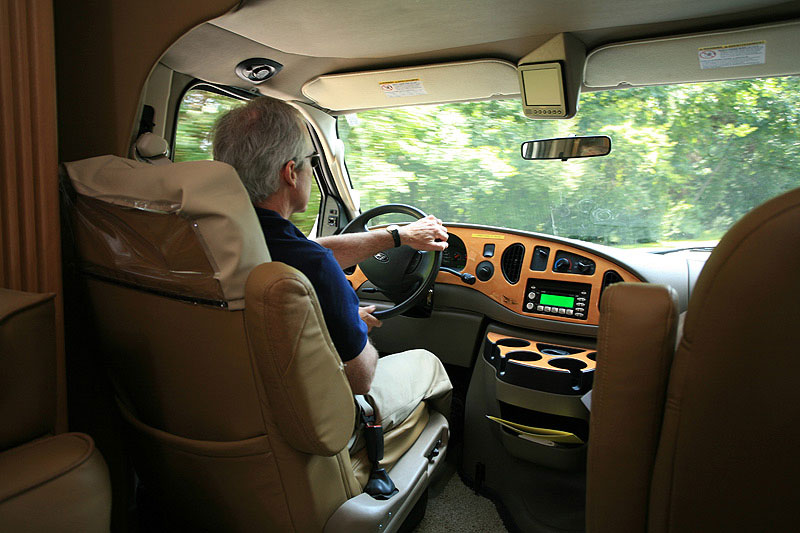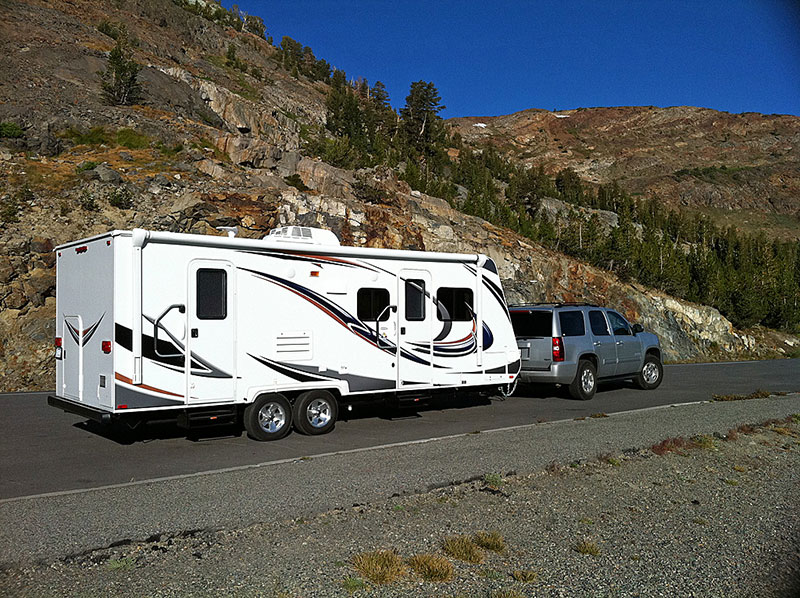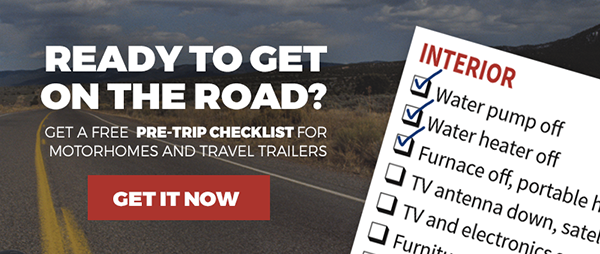Though they may seem monstrous, RVs are not as difficult to drive and maneuver as they look. With a little patience and practice, you can learn how to drive an RV and it will feel just as easy as driving your car. However, it will take some time to get used to how the RV handles differently. Because of this, you will want to take some time to practice driving your RV before hitting the road on your first cross country getaway.
Handling
A big part in how your RV handles is how you approach different driving situations. Things such as traffic, parking, and braking changes need to be handled based on the situation at hand when traveling. As you’re learning how to drive an RV, just remember that no matter where you are driving or what you are maneuvering through, your RV is bigger than a car. Make sure to leave enough space and be aware of all of the vehicles around you.
Before leaving for your road trip, take the time to learn where your blind spots are and work to eliminate them as much as possible. Everything from additional mirrors to cameras can help you eliminate the dangers associated with vehicles getting in your blind spots. Because of the blind spots, try to stay in the far right lane when driving on the highway and avoid moving in an out of lanes when possible.
Parking
One of the best tips on how to drive an RV is to keep on driving forward at all times. Though this is not always possible, it is the easiest way to reduce your chances of running over something when backing up. For example, when parking, try to park in spaces where you can easily pull through when leaving. Better yet, when stopping at rest stops, park where the trucks park. They are larger and offer pull-through parking, making it easier to leave.
Braking
Because of the size, braking with an RV will take longer than in your car. When learning how to drive an RV, make sure to have patience when in traffic and always allow ample room between you and the vehicles in front of you. Many drivers do not understand the distance it takes for an RV to come to a complete stop, so make sure to watch out for others who pull in front of you and pull back to give yourself enough space. It is best to keep a four- to six-second gap between you and the car in front of you. If you are towing a vehicle behind, make sure to allow additional time and distance when it comes to braking.
Turning
Turning an RV requires a larger radius than when in a car. Taking a turn too sharp could end you up on your vehicle’s side or up on the curb. You also need to be careful when turning and make sure you stay in your own lane. To do so, simply pull out further into the intersection before starting to turn the wheel.
Wind
Wind can have a huge influence on how your RV handles when on the open road. Everything from aerodynamics, to height and width, to weight will affect how much the wind will hinder your driving. A great tip on how to drive an RV is when the wind starts swaying and rocking the RV, it’s necessary to slow down and keep a good grip on the steering wheel.
Owning and driving an RV can be a fun experience. It can open up so many vacation possibilities and give you a sense of freedom. However, because it handles differently from a car, it will take time, practice, and patience to feel fully comfortable with it. If you follow these simple tips on how to drive an RV, you will feel like you have been driving one all your life.
Related video: RV Tips for Quieting Your RV on the Road




We drive a Thor citation24sr.We also own a 2011 mini cooper manual tran. We would like to flat tow but have heard horror st6ories, aby advice on prper towing technique would ne most appreciated.
is it have any bog differences than other M/H it seems to drive like 26" box truck but wit a lower center of gravity
I have a 36' class A motorhome 2021. If I am at a stop sign and want to turn right, how many feet from the front of the RV should I go past the sign before starting to turn right?
Pulling a tall 5th wheel GD 35 footer, I have discovered many diesel/gas stations are not set up for long 5th wheel. My pull horse is a huge Dodge Ram 2500 diesel long bed. I hate truck stops which require a fueling card. Is there a app out there which will assist in finding RV specific diesel stations other than the huge truck stops?
A worthwhile tip for the audience. Be careful when using Google Maps for routing. A couple of years ago we were following directions on a non- major highway as we a approached a railroad underpass with a 10.5 foot clearance! We luckily saw the warning sign before we got too close. We ended having to disconnect our TOAD and back up the RV to a spot where we could turn around. Google Maps didn’t know we were in an RV with a 12.5 foot clearance!!
We are planning to drive our rig from New York to Boca Raton,Fl. We also own a Mini Cooper S. Manual transmission. What is safest and easiest way of hauling?
THE Biggest thing anyone should know is: SLOW DOWN!
Difficult when you first start to get use too!
I had a Winnebago intent 2021 29l, we now have a 2022 Winnebago forza 34t, going uphill in the forza, it slows down to almost 30 mph, the intent would change gears faster and only slow down to maybe 50 to 55mph. The forza you only press the gas pedal to a certain amount, the intent had a lot more to press. What do I need to do to go uphill with more power and speed? Thanks
Things I should know